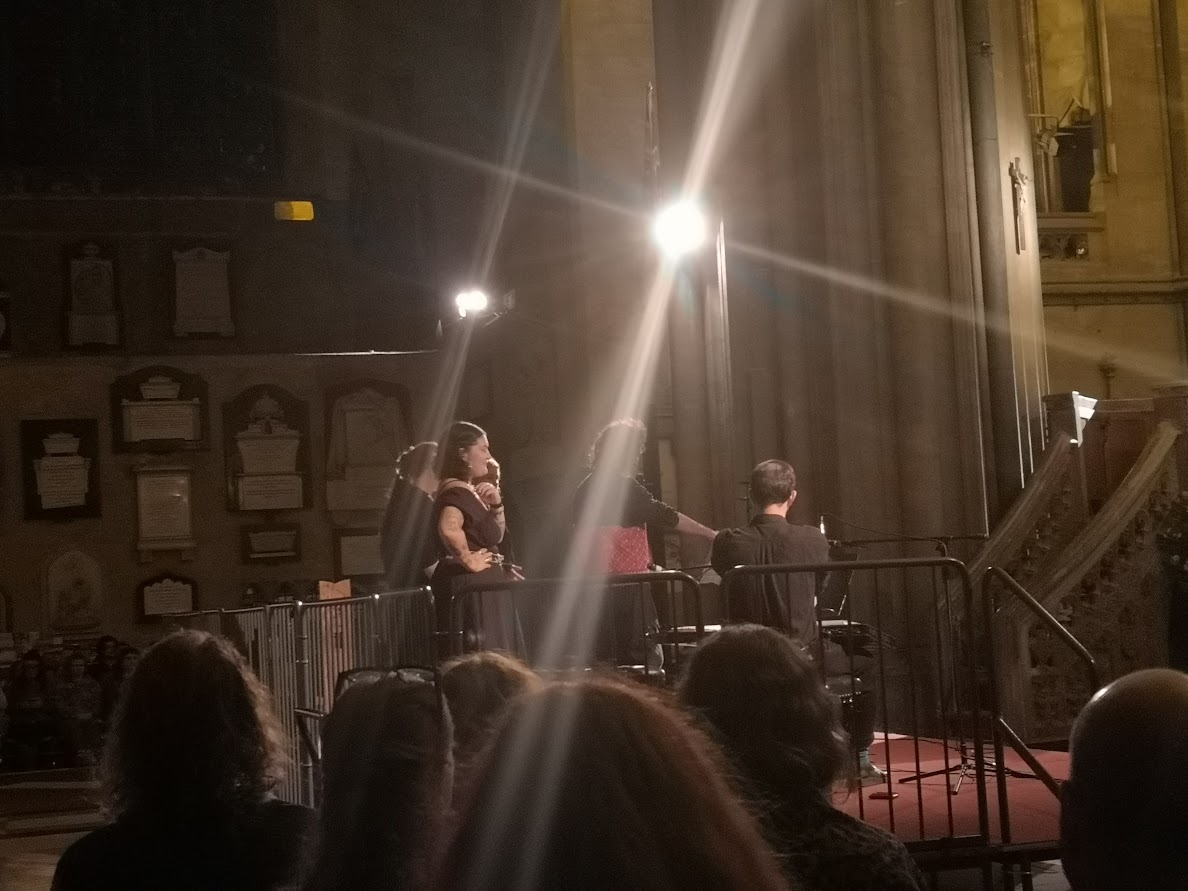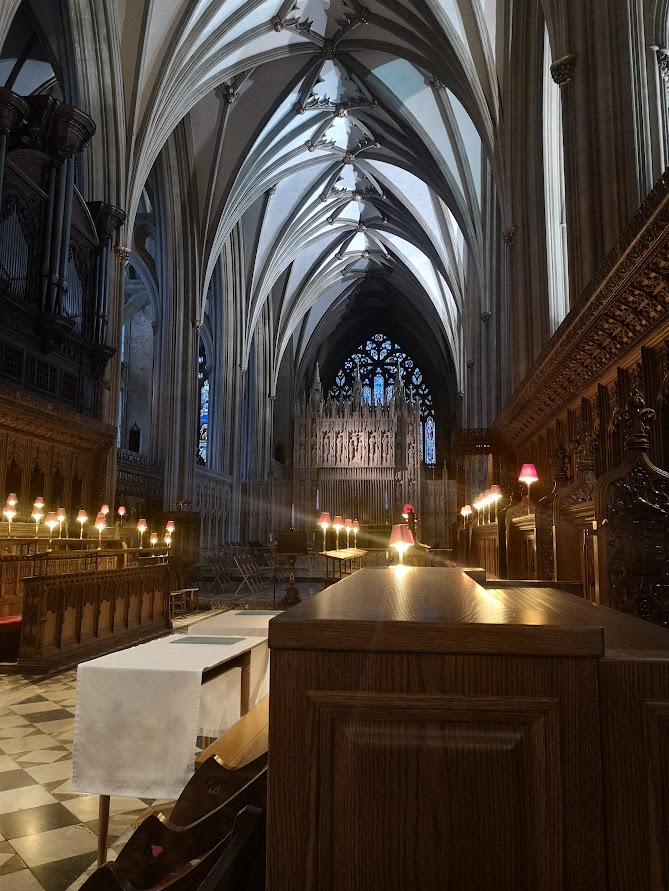
Music / Reviews
Review: Idrîsî Ensemble, Bristol Cathedral – ‘An uplifting sonic voyage through time’
It was beguiling, serene and hypnotic at the same time. But to call it a soundscape is almost an insult.
Yes, there is an escapist element, but that forms only a small part of the output and mission of Idrîsî Ensemble. What they offer is nothing short of a voyage through time, searching for vocal gems that connected and sustained communities as far back as the 5th century AD.
The setlist at Bristol Cathedral was a cornucopia of delights, weaving together music from the medieval Mediterranean with songs of worship, lamentation, joy and melancholy – a kaleidoscope of human emotions.
is needed now More than ever
The medieval cathedral was once more filled with ancient sounds echoing through its vaulted edifice.
View this post on Instagram
Scholarly interest in early chant is not new.
Esteemed composers such as Marcel Pérès have extensively studied and catalogued these works.
It is no coincidence that the founder of Idrîsî Ensemble, Thomas Fournil, undertook Guildhall School-funded trips to study with Pérès. The result is an opportunity for music lovers to encounter hidden gems of world music otherwise buried beneath the sands of time – Idrîsî Ensemble.
The packed audience at the Cathedral was immediately transported to the medieval world with Sibila Mallorquina, a 10th-century vocal work that undulated and pierced the heavy autumn air inside the cathedral.
This was followed by Kyrie Eleison, a traditional Catholic entreaty of Greek origin for divine mercy, delivered with delicacy and reverence by the stellar ensemble.

The north transept may not have been the best place to catch a glimpse of the ensemble—but did it matter? The soaring sound they created filled the vaulted edifice
The north transept may not have been the best place to catch a glimpse of the ensemble—but did it matter?
The soaring sound they created filled the vaulted edifice, conferring on all present the gift of sacred music.
Seated horizontally to the choir, with their backs facing you, one could not help but notice how, in every motet and song, they seemed to lift one another with supportive gestures.
The gestures were unmistakable, especially when a member nailed a technically demanding solo line.
There was a considerable homage to Fournil’s Corscian roots.
Liement me deport was a lamentation of piercing brilliance accompanied with kanun, a string instrument with Middle Eastern colours.
Congaudeant catholici was a pilgrims’ chorus on the famous pilgrimage to Santiago Composetalla. The vocal harmonies blended beautifully as it rose imploring the mercy of the almighty.
The music was a window into the psyche of the medieval mind – how people grieved, how they dealt with heartbreak, harsh climates and at times unspeakable acts of violence that hunted down communities.
One of the curious aspects of the Western world when it comes to death is the loss of community mourning.
It has become an entirely private affair, if carried out in public at all.
People seem to prefer to hide behind dark Gucci glasses, with no open lamentation over the remains of the departed.
This stands in stark contrast to traditions in the Mediterranean and the Levant, where mourning the dead is a sacred, communal act of grief and healing. The ensemble lent themselves fully to this sacred act of remembrance and consolation.
One of the highlights of the evening was a Corsican troubadour song that lamented the annihilation of the Occitans. Even after fleeing to the hills, they were hunted down mercilessly.
The purge of the Cathar “heresy” was sanctioned by the Church itself.
The result was the complete annihilation of Cathars, the decline of Occitan culture and language and the subsequent annexation of the South into the French crown, a proto-colonial purge which were to repeat for centuries to come.
This anthem was dedicated to the people of Palestine and victims of conflicts worldwide, which prompted a standing ovation even before it was performed. The heartfelt performance, of ethereal beauty and profound weight, brought another wave of applause as the audience rose once more to their feet.
Perhaps the most moving piece of the evening was Stabat Mater, which encapsulated the profound sorrow of the Blessed Virgin as she supports the dead weight of her son upon her lap, immortalised by many sculptors – most notably Michelangelo.
Mary’s grief is no distant incident but an echo that carries through the centuries, mirrored by the countless mothers who have mourned their sons and daughters cut down in their prime.
The super-ensemble – with vocalists Noémie Ducimetière, Elsa Hackett Esteban, Dunja Botić, Eliza Oakes, under the direction of Thomas Fournil and accompanied by Konstantinos Glynos, captured the solemn beauty of this lament with exquisite depth.
View this post on Instagram
The final piece of the evening was the threshing song Tribbiere, in which members mimicked the sound of cowbells, weaving the distant call to labour into a soundscape of communal activity enriched by theatrical flair and superb vocal performance.
The standing ovation lasted for over three minutes from a thoroughly enthralled Bristol audience, prompting an encore.
Fittingly, the ensemble closed with Guillaume de Machaut’s ending of a mass, Ite missa est, Deo gratias – “The mass is over. Thanks be to God.”

The setlist performed at Bristol Cathedral was a cornucopia of delights, weaving together music from the medieval Mediterranean with songs of worship, lamentation, joy and melancholy
All photos: Milan Perera
Read next:
 Our newsletters emailed directly to you
Our newsletters emailed directly to you



















